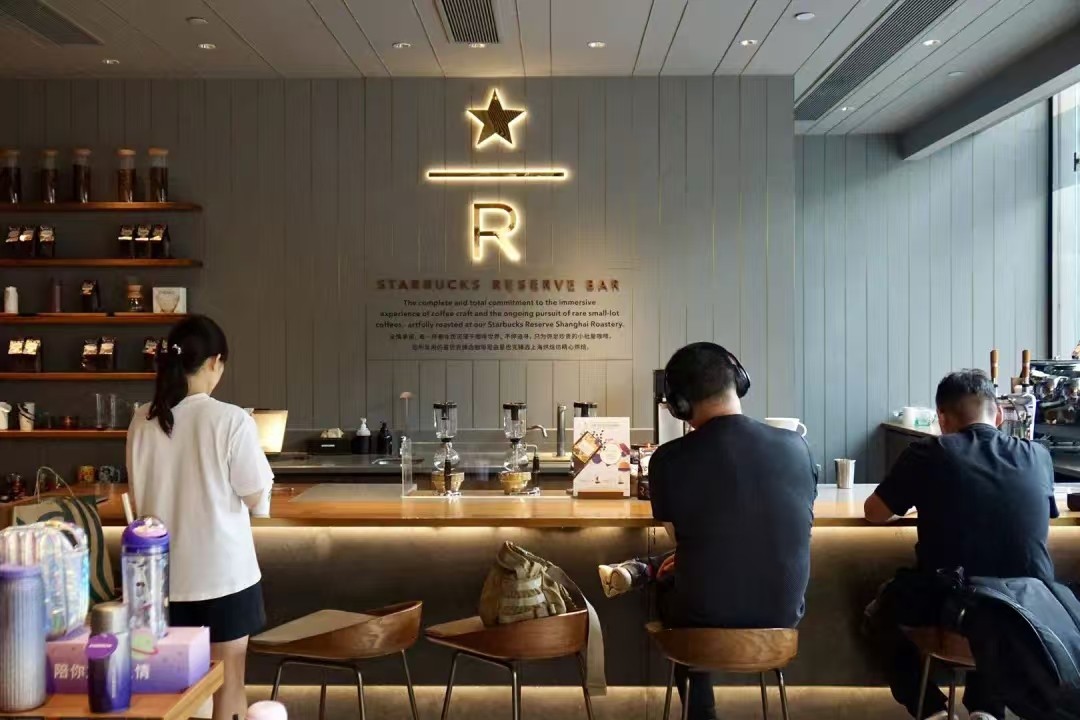Waking up to the scent of freshly brewed coffee might soon come with a new rule — at least for Starbucks customers.
The coffee giant has announced to its stores across North America that customers must make a purchase to stay in the venue, marking a sharp turn from the more relaxed 'third space' policy Starbucks adopted in 2018.
But what does this mean for China, Starbucks’ second-largest market, and a country with thousands of its stores nestled in bustling shopping malls and quiet neighborhoods alike?
No Purchase, No Stay
In North America, Starbucks’ new policy requires customers to buy something — anything! — to access seating, Wi-Fi, and restrooms.
This move is part of CEO Brian Niccol’s new strategy, 'Back to Starbucks,' aimed at re-centering the brand as a premium coffeehouse experience for paying customers.
The updated Starbucks Coffeehouse Code of Conduct also includes stricter guidelines against disruptive behaviors like bringing outside alcohol, smoking, harassment, and panhandling.
Starbucks employees have been instructed to enforce these rules and, if necessary, involve law enforcement to handle violations.
The decision comes as Starbucks grapples with declining sales.
In its 2024 fourth fiscal quarter, the company reported a 3% drop in revenue and a 25% fall in net profit, mainly due to sluggish performance in its North American market.
What About Starbucks in China?
So, will Chinese customers need to worry about being turned away if they have no latte in hand?
Not just yet.
Starbucks China has confirmed that no similar policy change is in place for its stores.
Local Starbucks store managers retain the flexibility to decide how to handle non-paying guests.
Typically, if seats are available, customers can relax without making a purchase. However, during busy hours, staff might politely ask non-paying visitors to free up seats for paying customers.
This more relaxed approach aligns with how Starbucks operates in China — a market where the brand has cultivated an image of being a cozy, welcoming space for students, remote workers, and casual meetups.
But with rising competition from domestic coffee brands like Luckin Coffee, which offers aggressive pricing and innovative flavors, Starbucks may eventually need to rethink its strategy in China too.
READ MORE: Luckin's Moutai-Flavored Latte Breaks the Chinese Internet
What Does the Future Hold?
Starbucks’ latest move in North America reflects a balancing act between creating an exclusive customer experience and managing operational challenges. However, applying this model in China might not be so straightforward.

Starbucks store in China. Image by Billy Jiang/That's
China’s café culture is different.
Coffee shops here are more than just a grab-and-go pit stop — they’re places for socializing, studying, and even quiet reflection.
For many, buying a single coffee and staying for hours isn’t just common — it’s expected.
Yet, Starbucks has been facing slowing growth in China, partly due to economic headwinds and fierce competition.
READ MORE: Get Ready to Pay More for Your Starbucks Fix
CEO Brian Niccol has acknowledged the need to 'reignite growth in China,' suggesting that some strategic changes could be on the horizon.
Whether that includes stricter in-store policies remains to be seen.
For now, Starbucks in China remains a comfortable haven where you can sip slowly without pressure.
But as the brand refocuses globally, could a tighter policy eventually cross over the Pacific to China?
Would you still love Starbucks if it required you to make a purchase to stay? Share your thoughts and stay updated on the latest business news by following our WeChat official account, ThatsGBA.
[Cover image by Billy Jiang/That's]





















0 User Comments